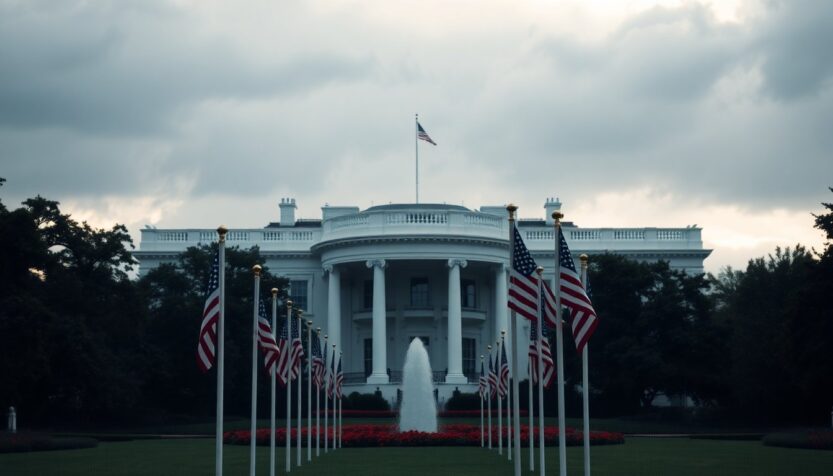In the midst of a government shutdown, the official website of the White House, WhiteHouse.gov, has become a focal point for political commentary. A banner prominently displayed on the site declares, “Democrats have shut down the government,” accompanied by a timer that counts the seconds since the shutdown began. This move informs the public while also assigning blame in a tense political climate.
Approximately 1.4 million federal employees are affected by the shutdown. About half are classified as essential workers who continue their duties without pay, while the remainder are on furlough. This ongoing stalemate in government operations has resulted in a clear message: the executive branch is directing criticism at the Democratic Party.
Political messaging through website updates
The Trump administration has expanded its political messaging by updating a long-standing page about the history of the White House grounds. This page now includes references to President Donald Trump’s plans for a new ballroom, alongside a timeline that highlights significant events in the White House’s history. The timing of these updates has raised questions, particularly as government operations remain hindered.
The timeline begins with notable events, such as George Washington’s selection of the White House site in 1791, and the fire that destroyed the building in 1814. However, the narrative takes a significant turn in the late 20th century, where presidential scandals begin to dominate the recounting of history.
Scandals overshadow history
One of the first entries following the Nixon era is the Bill Clinton scandal involving his affair with Monica Lewinsky. This incident led to intense scrutiny and impeachment proceedings, which are now highlighted on the timeline. The decision to emphasize such a scandal raises questions about the criteria for defining a “major event.”
Another controversial entry mentions a 2012 visit by members of the Muslim Brotherhood during Barack Obama’s presidency, framing it through a contentious lens that labels the group as a terrorist organization. This selective recounting of history appears designed to cast previous administrations in a negative light.
Modern-day implications and reactions
The timeline ultimately culminates in what the administration considers significant achievements of the Trump presidency, including Melania Trump’s South Lawn tennis pavilion. This juxtaposition of events raises eyebrows regarding the importance ascribed to various historical moments.
Additionally, the site features an image of Hunter Biden, son of President Joe Biden, accompanied by a caption speculating about his connection to a bag of cocaine found near the White House. This inclusion seems intended to distract from the ongoing government shutdown while provoking Democratic leaders.
Questionable decisions during shutdown
Despite the ongoing government shutdown, the White House website has become a platform for political messaging, a development that has drawn scrutiny. Kaelan Dorr, a communications staffer for the Trump administration, referred to the updates as “easter eggs” for historians, suggesting a light-hearted approach to a serious issue.
This decision to utilize the website for political gain during a time of limited government functionality raises critical questions about priorities. A planning document from the Executive Office of the President indicated that only essential functions related to public safety and constitutional responsibilities would continue. However, does posting politically charged content on the official website qualify as an essential duty?
Historical context and future implications
Approximately 1.4 million federal employees are affected by the shutdown. About half are classified as essential workers who continue their duties without pay, while the remainder are on furlough. This ongoing stalemate in government operations has resulted in a clear message: the executive branch is directing criticism at the Democratic Party.0
Approximately 1.4 million federal employees are affected by the shutdown. About half are classified as essential workers who continue their duties without pay, while the remainder are on furlough. This ongoing stalemate in government operations has resulted in a clear message: the executive branch is directing criticism at the Democratic Party.1

